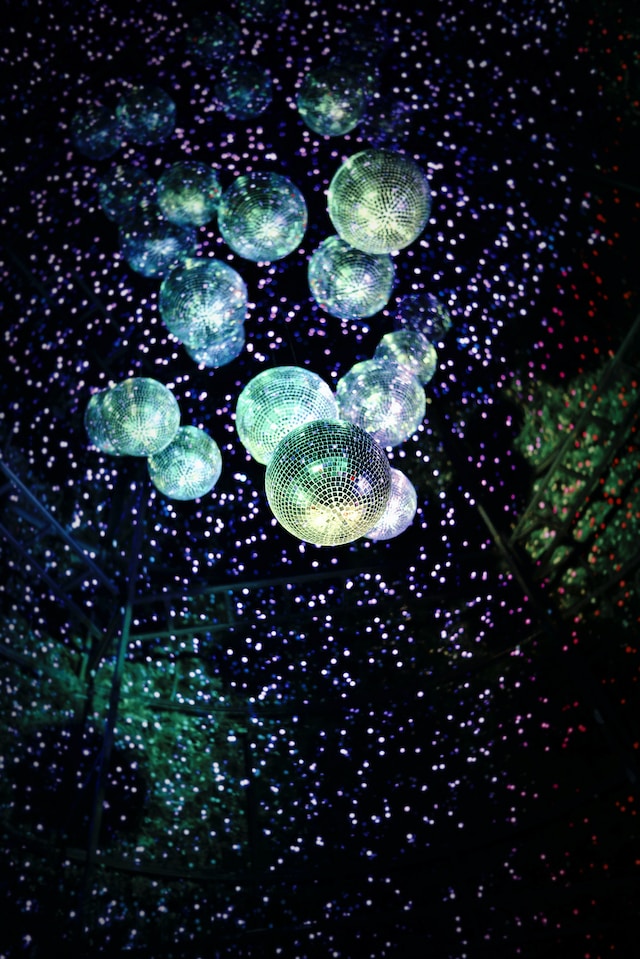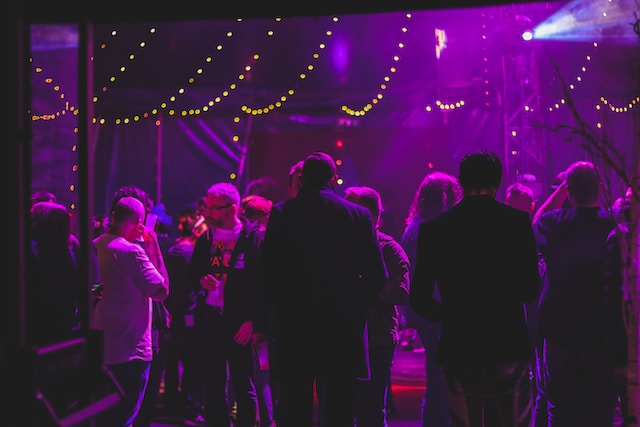What to Wear to an Edinburgh Club – NightClub Themes & Dress Codes
When going to an Edinburgh club patrons need to be aware of how to dress appropriately for the venue and event. Some nightclubs tend to impose strict dress codes that prohibit ripped clothing and athletic footwear, with bouncers often turning away guests wearing baseball caps (such as Yankee fitteds or snap-backs) or work boots that break these regulations.
Clubs may prohibit flat shoes such as sandals, flip-flops, and slides from patrons entering. Bouncers must evaluate patrons on an ongoing basis in order to assess if their appearance meets club standards or not.
While some venues labelled as an Edinburgh club do not enforce dress codes at all, others have specific guidelines that govern what types of clothing can enter; typically, this would include no jeans or shorts, as well as sports or athletic footwear being acceptable attire in nightclubs.

Casual
As nightclubs seek to maintain a certain image and ensure people will wear appropriate attire, most have some sort of dress code in place. Unfortunately, many individuals struggle with knowing exactly what attire to wear to these clubs; each club may require something different; casual wear might work, while more upscale venues might call for formal attire.
As an example, when visiting a casual club in Edinburgh, the rules can differ from those if you visited an upscale venue. Some Edinburgh clubs may even be more stringent and could reject you at the door if they do not meet their standards. This may be done to maintain an appropriate atmosphere; clubs want to maintain this vibe, so any behaviour that appears rough could cause unnecessary tension within their atmosphere.
Many clubs enforce dress codes that require men to wear pressed jeans and button-up shirts with buttons; athletic wear such as shorts and sneakers is forbidden, and in some cases, baseball caps too! Women must also follow certain attire guidelines; typically, heels, slacks, and blouses along with some sort of high heel are acceptable attire, while bags must be left in lockers at the entrance.
If you are uncertain of what to wear, a trusted friend could provide invaluable assistance and can advise as to the dress code of each club. Check their website too, if necessary!
When choosing your attire, remember that even small details can make an impactful statement. Avoid wearing flip-flops or singlets; choose dark-coloured shoes in timeless shapes instead; layer up in the winter months for added warmth; and make sure shoes are clean and polished to complete the look!
In summertime, wearing a short-sleeve dress t-shirt and jeans with casual shoes is often sufficient for attending most clubs, whereas when the weather turns colder, it would be wiser to select a long-sleeve dress shirt and formal shoes as your attire of choice.
Formal
A nightclub dress code is a set of regulations dictating how a person must be dressed to gain entrance. Violators of these rules will be turned away at the door. Not every club imposes them, though many do; these dress code regulations exist to maintain an exclusive appearance and ensure patron safety while also making clubs more appealing to prospective customers who assume that any place with such strict dress code requirements will likely offer only premium service.
Many dress codes in nightclubs prohibit clothing associated with hip-hop culture, such as baggy jeans and hoodies worn by young people who could potentially signal their affiliation to gangs. Nightclub owners fear this clothing may lead to dangerous confrontations or inappropriate behaviours; furthermore, some items of this clothing may be too revealing and inappropriate for the type of club being visited.
Most nightclubs require men to wear dress shoes and collared shirts while women must wear skirts, dresses, or nice jeans, with most prohibiting athletic wear like sneakers, sports shorts, or baseball caps that could be considered inappropriate in nightlife settings; such hats should be removed prior to entering clubs for men.
Men should dress in dark suits that fit properly, do not show tears or stains, and avoid flashy jewellery or brightly coloured shirts with messages such as logos. It would also be wise to bring along a dark tie rather than one featuring clip-on bowties.
Bouncers often abuse dress codes to discriminate against minorities, specifically black and Latino patrons. Some claim that bouncers deny them entry due to wearing clothing not suitable for the venue while allowing other patrons with similar clothing into the club despite it. Most owners refute these allegations by maintaining that dress codes simply serve to maintain an exclusive atmosphere.
Black Tie
If the invitation specifies “black tie optional,” that indicates more creative flair in terms of attire than if “black tie required” were the case. Although formality still requires appropriate attire, men can choose an alternative to tuxedos, such as dark suits, while women have the choice between long formal evening gowns or cocktail dresses as their attire of choice; bright colour pops, bold jewellery, and sparkly accessories can add flair.
In the case of a black-tie optional event, if you opt for more casual attire rather than formal wear, make sure your shoes and accessories remain elegant and classy. Even jeans and shirt combinations can be elevated by adding velvet blazers or jacquard dresses; additionally, you’ll be able to match them up with an appropriate bow tie or cummerbund to complete your ensemble.
Hosts may write “black tie preferred” on an invitation as another way of setting expectations, similar to “black tie optional,” yet more definitive in their expectations. This text makes clear that all guests are expected to wear formal attire such as tuxedos and other formal wear; such language ensures guests know exactly what attire the host expects of them. Such language makes guests feel assured that they should prepare accordingly.
At every event, there may be guests who misinterpret “black tie” and arrive in what they perceive to be appropriate attire. A host should always explain to such guests that black tie actually refers to formal attire; they will probably accept your explanation more readily than writing “black tie required” on an invitation, as this could come across as heavy-handed and exclusive.
Once upon a time, women attending black-tie events typically wore long black gowns as the standard attire. But today, many take more fashion risks at these formal events by wearing cocktail dresses with vivid hues, featuring high backs or plunging necklines, or perhaps selecting a sequin number or something with an unusual cut.
Disco
Disco first emerged as a dance music genre during the early 1970s in underground venues such as loft parties and bathhouses in New York City. A hybrid of funk and pop styles, disco featured melodic hooks layered over driving beats with sixteenth-note hi-hat cymbal patterns and an unending bassline, eventually becoming widely popular worldwide and giving birth to an international cultural movement.
After disco’s brief reign as the most popular pop music genre from 1978–1979, its patented dance groove began to fade. Disco’s success triggered a backlash from more conservative elements within white society; bumper stickers and graffiti bearing slogans like “Disco is trash!” soon began appearing around town.
Disco was often considered too raunchy for mainstream audiences, given its appeal to gay, black, and Latino audiences. Additionally, this music was seen as a threat by rock’s core audience, which strongly disapproved of any genre that threatened to undermine their values and ideals.
Disco is currently enjoying something of a revival as artists such as Dua Lipa and Doja Cat integrate disco influences into their sound. But whether the genre will continue its rise or fizzle out is yet to be determined; its success will depend on how mainstream musicians embrace disco and encourage young people to attend concerts. More mainstream musicians embrace disco, which equals a higher survival rate, so it is crucial that we understand its history and how it has developed over time.

Olivia is a hairstylist and beauty writer specializing in elegant wedding hairstyles and haircare tips for brides. She shares inspiration for timeless and modern bridal looks.





